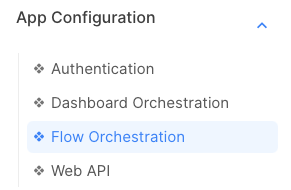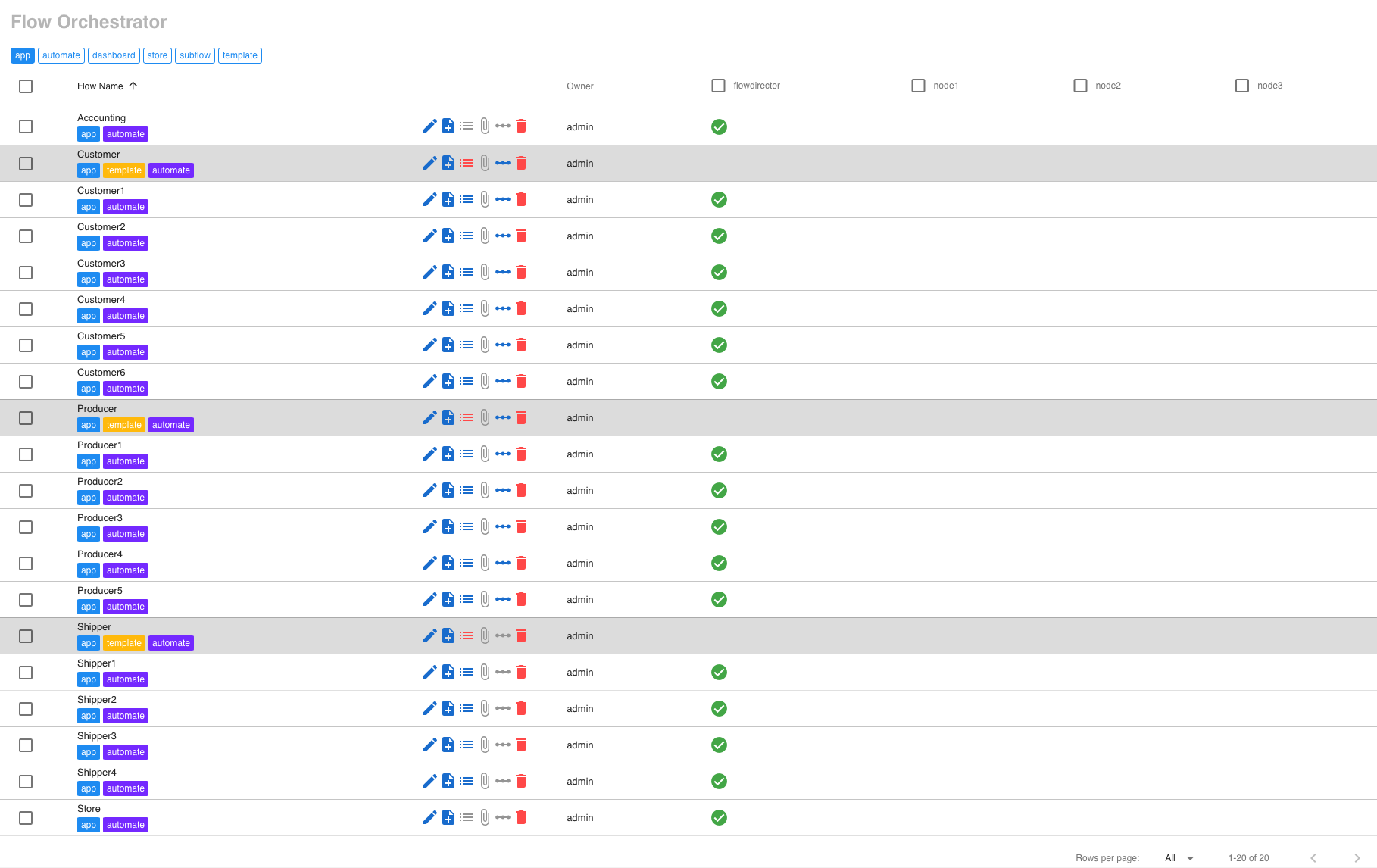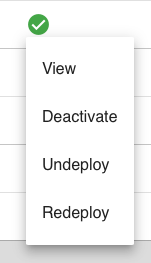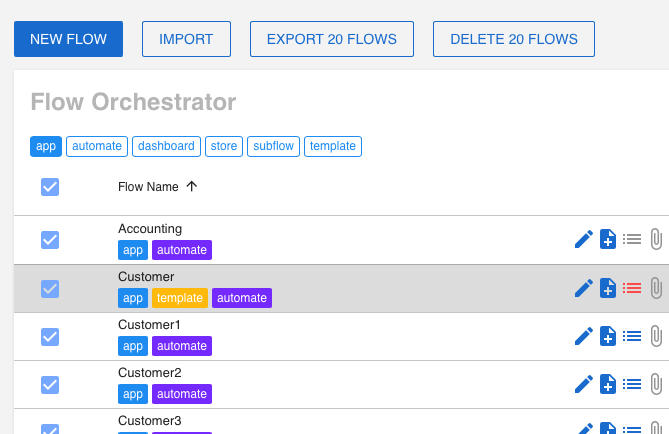Flow Orchestrator
The flow orchestrator is the central place to control and manage all your app flows within the whole connected SwiftMQ router network.
It is reachable from this menu:

General Layout

New Flow
Creates a new flow and launches the flow editor.
Tag Selector
Selects the rows (flows) to be displayed in the table. You can use multiple tags to select. Any flows that match all selected tags are displayed.
Rows
Each row represents a flow. Those which are grayed-out are not executable. These are template flows and flows that are not valid. Either the flow has not been finished, properties or flow parameters are missing.
Each row has several buttons:
Edit: Launches the flow editor.
Copy: Copies this flow.
Flow Parameters: Opens a dialog to edit the parameters of this flow.
Attachments: Opens a dialog to attach
jarfiles to use external libraries orpemfiles with custom certificates.Dependencies: Opens the dependency dialog to specify which flows need to be activated before you can activate this flow.
Delete: Deletes this flow.
Router Nodes
Display a column for each connected SwiftMQ router. These are the node where the flows can be deployed and activated, aka where the flows are actually executed.
In the standard Flow Director distribution, you have a single node which is the embedded SwiftMQ router with the name flowdirector. If you connect more routers, you will see them as columns and can use them as deployment and execution node:

Flow Operations
Operations on a flow can be executed by pointing the mouse at the cell of the flow/node combination:

An empty cell will only display deploy as possible operation.
If you edit a flow and it is deployed or activated, it turns yellow to indicate that the deployed version is older than your current version:

Deploy
The deploy operation generates the flow as JavaScript, transfers it to the router node, and stores it there.
Activate
A deployed flow is started.
Deactivate
An activated flow is stopped.
Undeploy
An activated flow is stopped. The deployed flow is removed from the node. All data of the flow stored in Memory components are deleted.
Redeploy
This operation is a combination of deactivate - undeploy - deploy - activate. All data of the flow stored in Memory components are deleted.
Update
This operation is a combination of deactivate - deploy - activate. Only the flow is generated, the data is kept. This might be lead to inconsistencies as the updated flow needs to handle the data from the prior version.
View
This invokes the flow viewer to view the flow live.
Set Operations
Performing cell operations for many flows, i.e., deploying 20 flows on 10 nodes, can be time-consuming. The flow orchestrator has set operations to reduce this time. You can select single or all rows and single or all nodes and have the following operations available:

Deleteall selected flows.
If you select router nodes too, you can perform set operations for all selected cells:


This will perform 17 x 3 = 51 operations with one click. Necessary intermediate operations are performed as well. So if you chose Activate and the flow is undeployed, it is deployed before activating it. So actually, 102 operations are performed.
